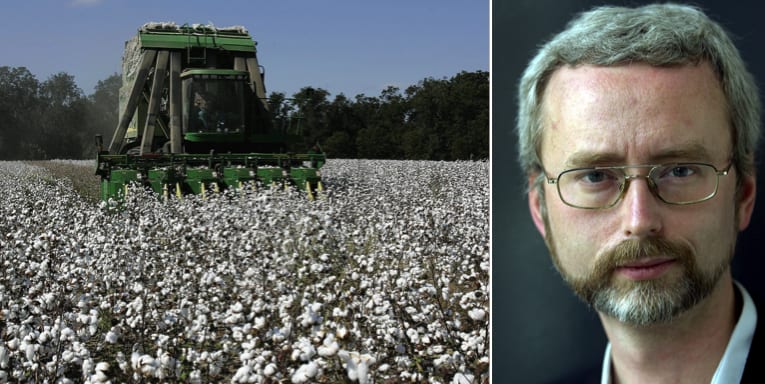
Harrison: Kläder i bomull gav britter försprång
Smarta innovationer inom textilindustrin är ett av skälen till att den industriella revolutionen började i Storbritannien, skriver historikern Dick Harrison i en krönika i SvD. Britterna hade god tillgång till billig bomull som importerades från andra länder. Genom att göra kläder ur materialet, som är lätt att bearbeta mekaniskt, kunde fabrikanter dessutom undgå konfrontationer med de traditionella klädtillverkarna som till exempel jobbade med ylle och linne i samband med att nya snillrika innovationer infördes och rationaliserade klädindustrin.
Mer om ämnet
bakgrund
Den industriella revolutionen
Wikipedia (en)
The Industrial Revolution was the transition to new manufacturing processes in the period from about 1760 to sometime between 1820 and 1840. This transition included going from hand production methods to machines, new chemical manufacturing and iron production processes, improved efficiency of water power, the increasing use of steam power, the development of machine tools and the rise of the factory system. Textiles were the dominant industry of the Industrial Revolution in terms of employment, value of output and capital invested; the textile industry was also the first to use modern production methods. The Industrial Revolution began in Great Britain and most of the important technological innovations were British.
The Industrial Revolution marks a major turning point in history; almost every aspect of daily life was influenced in some way. In particular, average income and population began to exhibit unprecedented sustained growth. Some economists say that the major impact of the Industrial Revolution was that the standard of living for the general population began to increase consistently for the first time in history, although others have said that it did not begin to meaningfully improve until the late 19th and 20th centuries. At approximately the same time the Industrial Revolution was occurring, Britain was undergoing an agricultural revolution, which also helped to improve living standards and provided surplus labour available for industry.
Mechanised textile production spread from Great Britain to continental Europe in the early 19th century, with important centres of textiles, iron and coal emerging in Belgium, and later in France. Since then industrialisation has spread throughout much of the world. The precise start and end of the Industrial Revolution is still debated among historians, as is the pace of economic and social changes. GDP per capita was broadly stable before the Industrial Revolution and the emergence of the modern capitalist economy, while the Industrial Revolution began an era of per-capita economic growth in capitalist economies. Economic historians are in agreement that the onset of the Industrial Revolution is the most important event in the history of humanity since the domestication of animals and plants.
The First Industrial Revolution evolved into the Second Industrial Revolution in the transition years between 1840 and 1870, when technological and economic progress continued with the increasing adoption of steam transport (steam-powered railways, boats and ships), the large-scale manufacture of machine tools and the increasing use of machinery in steam-powered factories.
bakgrund
Storbritanniens ekonomiska historia
Wikipedia (en)
The economic history of the United Kingdom deals with the economic history of England and Great Britain from 1500 to the early 21st century. (For earlier periods see Economy of England in the Middle Ages and Economic history of Scotland).
Britain led the industrial revolution and dominated the European and world economy during the 19th century. It was the major innovator in machinery such as steam engines (for pumps, factories, railway locomotives and steamships), textile equipment, and tool-making. It invented the railway system and built much of the equipment used by other nations. As well it was a leader in international and domestic banking, entrepreneurship, and trade. It built a global British Empire. After 1840 it abandoned mercantilism and practised "free trade," with no tariffs or quotas or restrictions. The powerful Royal Navy protected its global holdings, while its legal system provided a system for resolving disputes inexpensively.
Between 1870 and 1900, economic output per head of population in Britain and Ireland rose by 500 per cent, generating a significant rise in living standards. However, from the late 19th century onwards Britain experienced a relative economic decline as other nations such as the United States and Germany caught up. In 1870, Britain's output per head was the second highest in the world after Australia. By 1914, it was fourth highest. In 1950, British output per head was still 30 per cent ahead of the six founder members of the EEC, but within 50 years it had been overtaken by many European and several Asian countries. The economic history of the United Kingdom deals with the economic history of England and Great Britain from 1500 to the early 21st century.
Omni är politiskt obundna och oberoende. Vi strävar efter att ge fler perspektiv på nyheterna. Har du frågor eller synpunkter kring vår rapportering? Kontakta redaktionen